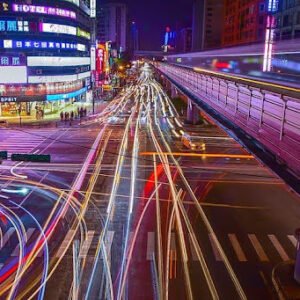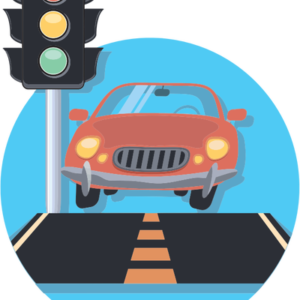With AI stepping up in the traffic control system, it could lead to effective city planning and reduced jams. Can it end road rage?
Nobody enjoys traffic. It is noisy, stressful, and time-consuming. From long red lights to unexpected jams, our roads often feel more chaotic than controlled. But now, tech companies are stepping in with a quiet revolution: AI-powered traffic control systems. These systems are not just smart; they aim to be thoughtful. They aim to be the end of road rage.
Unlike traditional traffic lights, which run on fixed timers, AI traffic systems can “learn” from real-time data. They adjust signals based on how many vehicles are on the road, current speeds, weather, and even past traffic trends. In many cities, cameras and sensors already feed this data into software that helps manage traffic flow better. The goal? Smoother, faster, and safer roads for everyone.
Tech firms around the world are investing in such systems. Google’s DeepMind and IBM, for instance, have explored AI’s role in traffic. Their tools analyze huge amounts of data from roads and vehicles to suggest smarter traffic rules or patterns.
It is a fair question. We all know the frustration of sitting at a red light when no cars are coming from the other direction. Or worse, being late to work because of a jam that could have been avoided. This frustration often boils over into road rage: honking, yelling, and unsafe driving.
Now imagine a traffic system that sees these problems coming and acts before you ever notice. If an AI traffic system predicts a jam in one direction, it can give longer green lights on that side. If it senses aggressive driving patterns, it can alert city control centers.
By reducing waiting times and unpredictability, AI may also reduce the emotional triggers behind road rage. After all, less time stuck in traffic means less time getting angry. Moreover, this not only helps individual drivers but also improves the mood of entire communities. Less honking, fewer accidents, and smoother roads mean less tension on the streets.



As AI takes the wheel, at least in traffic control, we’ll likely see changes in the way cities build and manage their roads. For one, traffic rules may become more flexible. Instead of static speed limits or fixed signal timings, we may shift toward adaptive systems. A road that has a 50 km/h limit during the day might be reduced to 30 km/h at night if data suggests that is safer. Lawmakers might also update policies to include AI monitoring. For example, systems may report repeated violators or help identify areas that need more traffic patrols. This could improve road safety without increasing manpower.
Urban planning may evolve, too. Cities could use traffic data collected by AI to redesign roads, remove bottlenecks, or create smarter parking areas. Tech companies could partner with local governments to develop apps that suggest less congested routes, based on real-time AI feedback.
There is also the legal side. Who is responsible if AI makes a bad call? This will open up discussions around digital accountability and ethics. But one thing is clear that laws will need to catch up.
We are still in the early stages. AI traffic control would not fix every problem overnight. But what it offers is hope of a better system, designed with people in mind. If done right, it can help end the daily war many of us fight on the roads. Less waiting, less guessing, and far fewer reasons to lose our cool behind the wheel.
As tech companies continue to work on smarter traffic solutions, we have a chance to make city life just a little more peaceful. Not by asking drivers to change overnight, but by letting our systems work smarter for us all. Road rage may not vanish completely. But with AI in control, we might finally see the traffic behave more like it should, and drivers breathing a little easier.
Need help building tech solutions for your city or startup? Reach out to our team. We are building tomorrow’s tools, today.
References:
https://github.com/Natnael-k/AI-based-Traffic-Control-System–
https://en.wikipedia.org/wiki/Real-time_data
https://en.wikipedia.org/wiki/Google_DeepMind
https://en.wikipedia.org/wiki/IBM
https://www.slscorp.com/smarttraffic
https://wokegenics.com/fueling-with-technology-through-electric-vehicles/
https://wokegenics.com/the-future-of-cities-smart-tech-urban-innovation/
https://wokegenics.com/emerging-cybersecurity-challenges-how-to-solve-them/
https://wokegenics.com/the-latest-ai-innovations-whats-next/
https://wokegenics.com/initiatives-taken-by-govt-towards-technological-development/